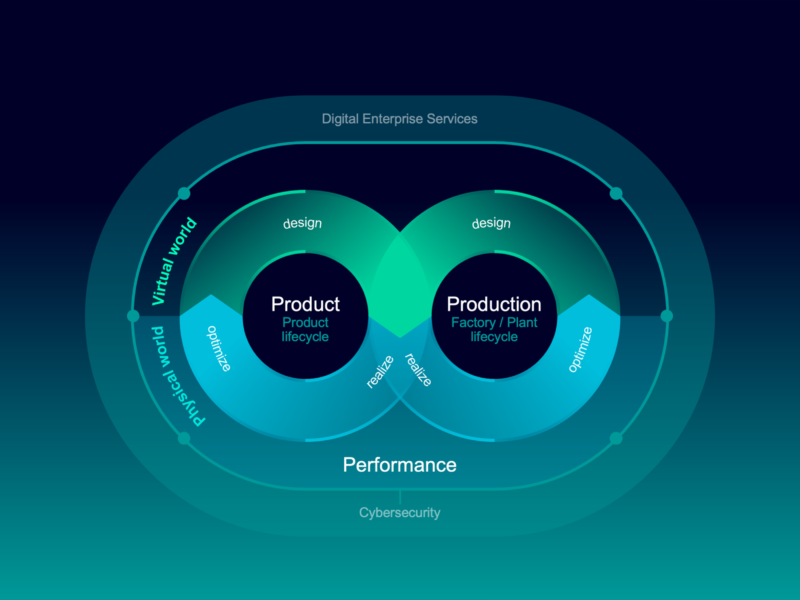
Siemens highlights digital twin technology with 5G
The Covid 19 pandemic has changed markets and requirements almost overnight. Added to this are the growing individualization and the urgent need for more sustainability, and this can only be delivered with digitalization and automation says the company. Digital twin modelling of physical systems in a virtual environment is a key technology for this, says Cedrik Neike, member of the Managing Board of Siemen and CEO of Siemens Digital Industries, and the company has been gathering digital twin technology for several years. This now being combined with industrial 5G to provide real time data.
This comes as Nvidia has teamed up with BMW to demonstrated its Omniverse digital twin technology. In an initial pilot project, the US company equipped logistics robots as well as autonomous transport robots (STR) developed in-house with high-performance technology and special AI modules for control.
“The rapid development of available data in recent years makes one thing clear – digitalization knows no end. Instead, it starts an infinite loop: you collect data, and you learn from it, you take the next step,” said Neike. “In production, this creates an infinite pool of knowledge that we are far from fully leveraging. And anyone who manufactures in an industrial way can take advantage of this potential. This applies to production sites with a long history just as much as it does to completely new production sites from the very first pixel of planning onwards.
Siemens links data from the entire lifecycle of products and production, of information technology (IT) with its data analysis capabilities and operational technology (OT), and of the manufacturing level with the office level. This creates a continuous cycle for optimization.
In this industrial Internet of Things, the industrial processes are modular and flexible, thus always enabling optimal adaptation of all lifecycle parameters. This also includes the factory buildings and the workflows of suppliers and logistics partners.
To ensure that data is transmitted quickly and reliably to the right place via high-performance communication networks and that all production areas can thus react immediately to changes, Siemens sees industrial 5G as key. The ability to operate such private 5G networks enables companies to tailor them specifically to the performance, reliability, and security requirements. In Germany, companies also benefit from being able to use private 5G frequencies exclusively at their sites.
Siemens is setting up a prototype industrial 5G campus network in one of the exhibition halls at the Hannover Messe site. In the future, the network can be used by exhibitors during ongoing trade fairs and will be available to companies outside of trade fair times for tests and field trials.
Siemens is also expanding its portfolio in edge computing for real-time analysis of data on-site in production and its intelligent use. In addition to the connection of Simatic and Sinumerik controllers to the Siemens Industrial Edge, the offering for the connection of drive technology is also being expanded. Drive technology is considered an important indicator of machine availability. In addition to impacting variables such as speed and torque, it also provides information for the use of edge computing as to whether the machine is running fault-free and at an optimum level within its parameters, for example in terms of energy consumption. Intelligent analysis technology can thus inform operators at an early stage when, for example, maintenance is due, or energy can be saved.
Related digital twin articles
- Siemens shrugs off Covid-19 with new CEO
- Siemens boosts its simulation software
- Siemens to build twin of Singapore train line
Other articles on eeNews Europe
- French five in e-mobility software and data alliance
- Intel could make automotive chips to ease shortfall, says CEO
- Mipsology signs Taiwan AI deal
- Toshiba in $20bn UK takeover offer
- Europe falls behind in chip design market
 If you enjoyed this article, you will like the following ones: don't miss them by subscribing to :
eeNews on Google News
If you enjoyed this article, you will like the following ones: don't miss them by subscribing to :
eeNews on Google News



